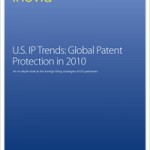A recent decision by the Supreme Court of the United States may now allow copyright owners to bring a lawsuit without securing a federal copyright registration—though the issue is not wholly resolved. On March 2, 2010, the Supreme Court unanimously held that, although the registration requirement found in § 411(a) of the Copyright Act is a precondition to filing a copyright infringement claim, the requirement is not “jurisdictional” in nature. A copyright holder’s failure to comply with that requirement does not restrict a federal court’s subject matter jurisdiction over infringement claims involving unregistered works. The Supreme Court’s opinion, however, leaves unanswered questions regarding § 411(a)’s impact on litigants who have not registered their works with the Copyright Office. Reed Elsevier, Inc. v. Muchnick, 130 S.Ct. 1237 (2010).
Section 411(a) and the Courts before Muchnick
Section 411(a) states that “no action for infringement of the copyright in any United States work shall be instituted until preregistration or registration of the copyright claim has been made,” subject to only a very limited exception. Before the Supreme Court’s ruling in Muchnick, the lower courts interpreted § 411(a) as a “jurisdictional” bar to bringing suit; if the plaintiff did not have a copyright registration in place, the court did not have jurisdiction over the case. In such instances, the court—even without the request of the defending attorneys—was obligated to dismiss the case because the court lacked jurisdiction over the subject matter of the case.
The Muchnick Case
The Muchnick case began as a copyright infringement class action suit initiated by freelance authors against various publishers that the authors claimed reproduced the authors’ works into their online databases without obtaining permission. Some of the authors’ works were registered with the Copyright Office; others were not.
The parties to the case reached a settlement agreement, which allowed authors with registered works to receive higher compensation than those with unregistered works. Author Muchnick and nine others, who had unregistered works, objected to the terms of the settlement and appealed the case to the Second Circuit. The Second Circuit held that the settlement was invalid because, under § 411(a), the District Court lacked subject matter jurisdiction over the claims related to the unregistered works.
The Supreme Court agreed to hear the case and held that § 411(a)’s registration requirement is not “jurisdictional” and, therefore, did not prevent the District Court from ordering the settlement agreement related to registered and unregistered works. Following the bright-line rule announced in the 2006 Arbaugh v. Y & H Corp. decision, the Supreme Court found that Congress did not expressly state that § 411(a) is a jurisdictional requirement; without an express statement, the rule is not “jurisdictional.”
What is “Jurisdictional?”
A violation of a jurisdictional rule may be raised by any litigant at any time during litigation— including when the case is on appeal. The courts must also police compliance of jurisdictional rules sua sponte, upon the courts’ own prerogative. Further, jurisdictional rules are not subject to waiver or consent, equitable principles, or forfeiture.
Because § 411(a) is no longer “jurisdictional,” the court now allows federal trial courts to approve settlements involving both registered and unregistered works. Additionally, the Eleventh Circuit’s doctrine that prohibited plaintiffs from seeking declaratory judgments of non-infringement when the plaintiff did not have a copyright registration may no longer bar plaintiffs from seeking declaratory relief.
Unanswered Questions
What is left to be determined is, if not “jurisdictional,” what kind of requirement § 411(a) is and how it will affect future copyright infringement litigation. Section 411(a) will likely still provide a mechanism for defendants to quickly and easily dismiss an action involving unregistered works, albeit on non-jurisdictional grounds. The question, however, remains as to whether a defendant may waive the registration requirement so that it may go ahead and defend its case in the first action filed rather than wait for the plaintiff to obtain a registration and sue them again. It is also unclear whether courts will now allow cases to proceed when the plaintiff has filed an application but is still awaiting the registration certificate from the Copyright Office. Finally, it is unclear whether trial courts may be able to provide some equitable exceptions to the registration requirement and whether the trial courts may dismiss claims based on unregistered works without waiting for the defendants’ motions.
Today’s post is by Guest Baristas Melissa Kern and Austin Padgett, attorneys in Frost Brown Todd’s Trademark/Copyright Law Practice Group.



